A/B Testing
Understanding Data Science

Lis Sulmont
Curriculum Manager, DataCamp
Data science workflow
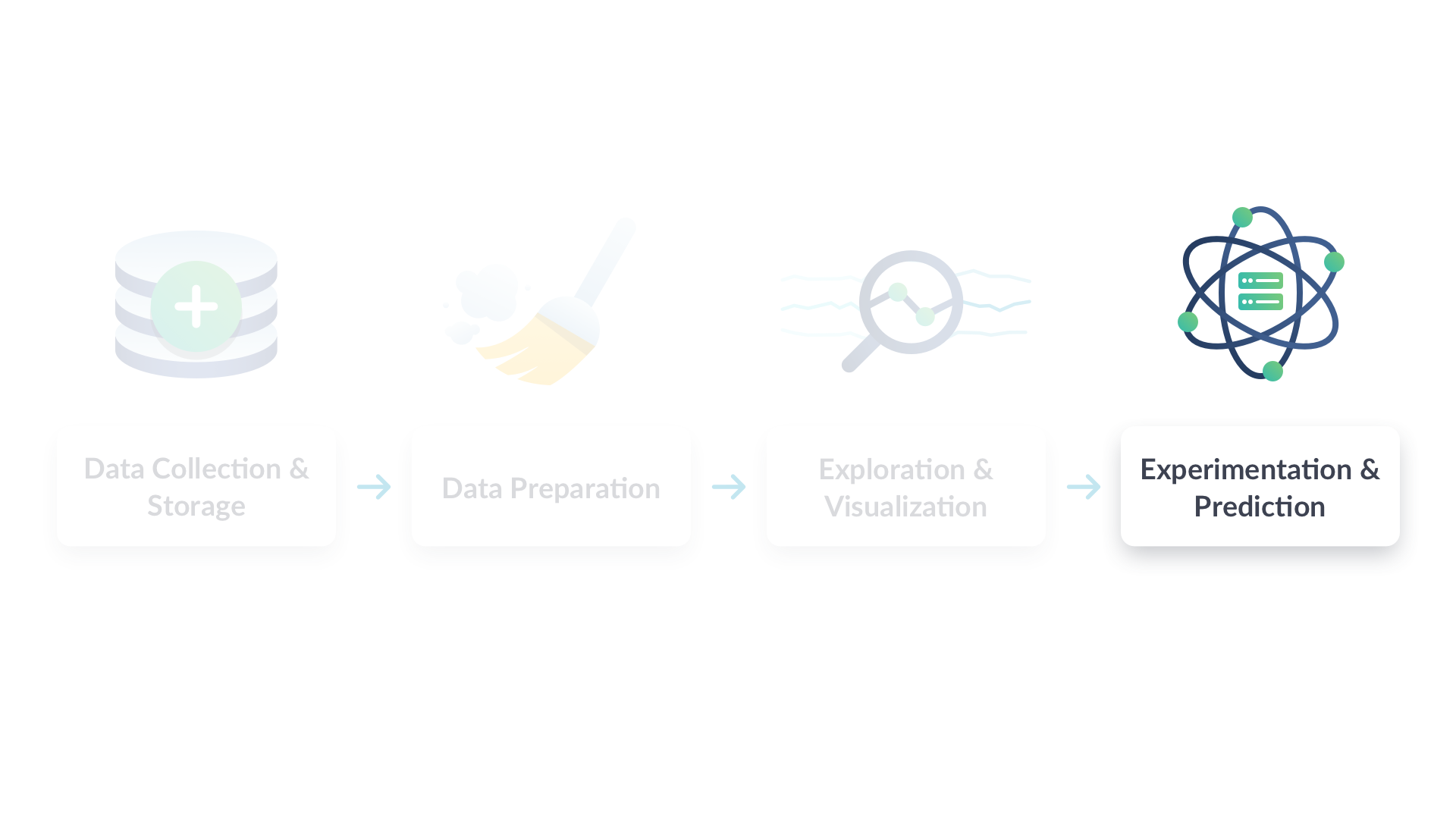
What are experiments in data science?
Experiments help drive decisions and draw conclusions
- Form a question
- Form a hypothesis
- Collect data
- Test the hypothesis with a statistical test
- Interpret results
Case study: which is the better blog post title?
Form a question: Does blog title A or blog title B result in more clicks?
Form a hypothesis: Blog title A and blog title B result in the same amount of clicks.
Collect data:
- 50% users will see blog title A
- 50% users will see blog title B
- Track click-through rate until sample size reached
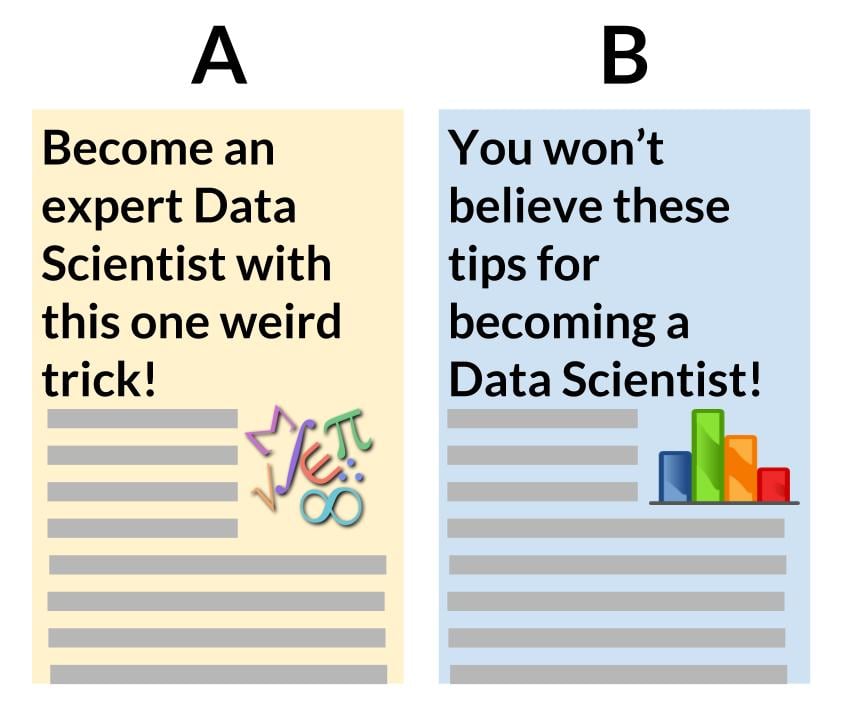
Case study: which is the better blog post title?
Test the hypothesis with a statistical test: Is the difference in titles' click-through rates significant?
Interpret results:
- Choose a title
- Or ask more questions and design another experiment!

What is A/B Testing?
AKA Champion/Challenger Testing
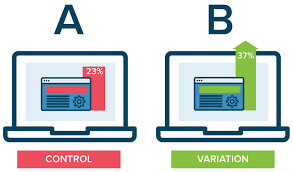
Terminology Review
- Sample size: number of data points used
- Statistical significance: result is likely not due to chance
- Given assumptions of statistical model
- Use statistical tests to calculate this:
- e.g., t-test, Z-test, ANOVA, Chi-square test
A/B Testing Steps
- Picking a metric to track
- Calculating sample size
- Running the experiment
- Checking for significance
Pick a metric to track: click-through rate
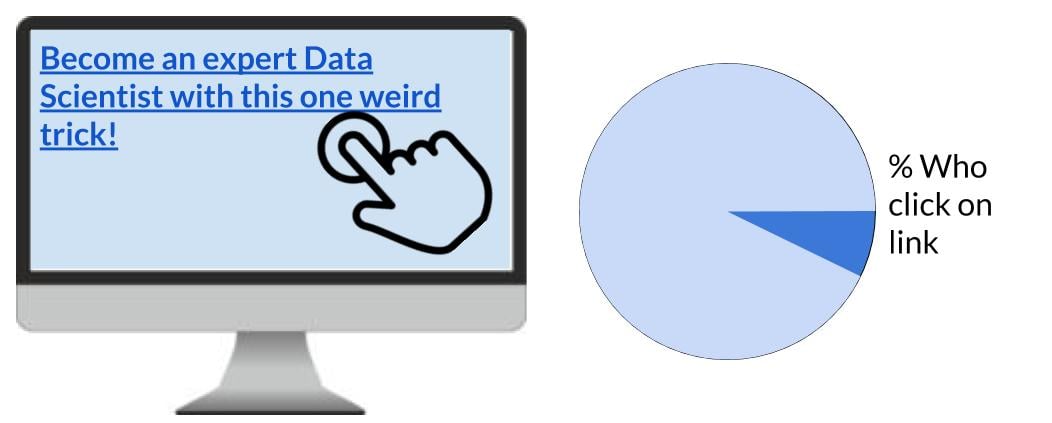
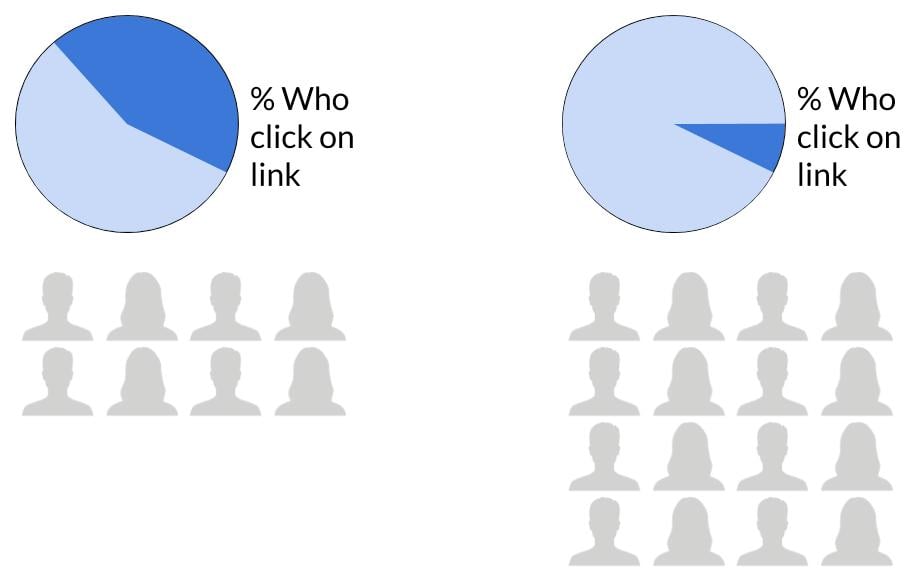
- Baseline metric to gauge any changes
- How often people generally click on a link to our blogs
- If the rate is much larger or smaller than 50%, we need a large sample size
- Click rate is typically small (<3%)
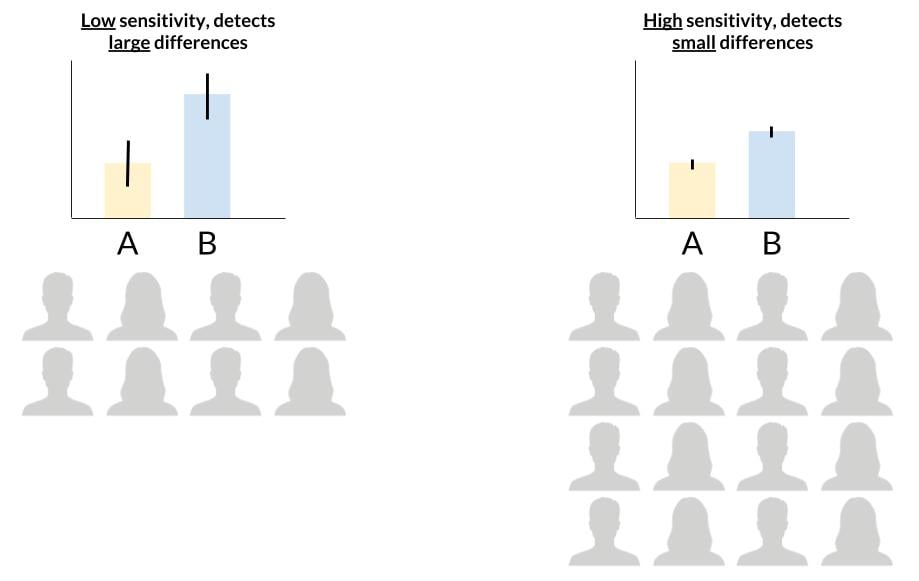
Larger sample sizes allow us to detect smaller changes
Run your experiment
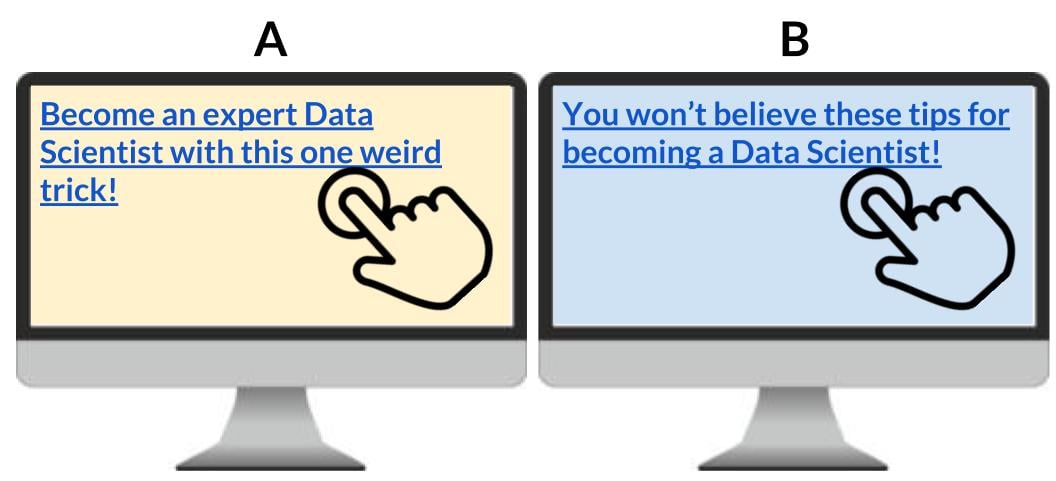
Check for significance
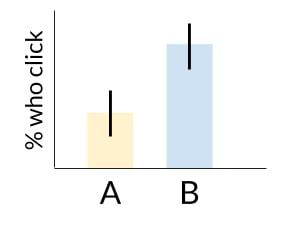
What if the results aren't significant?
- Difference is smaller than the threshold we chose
- Running our test longer won't help
- Still might be a difference; it's just small and insignificant to us
Let's practice!
Understanding Data Science

